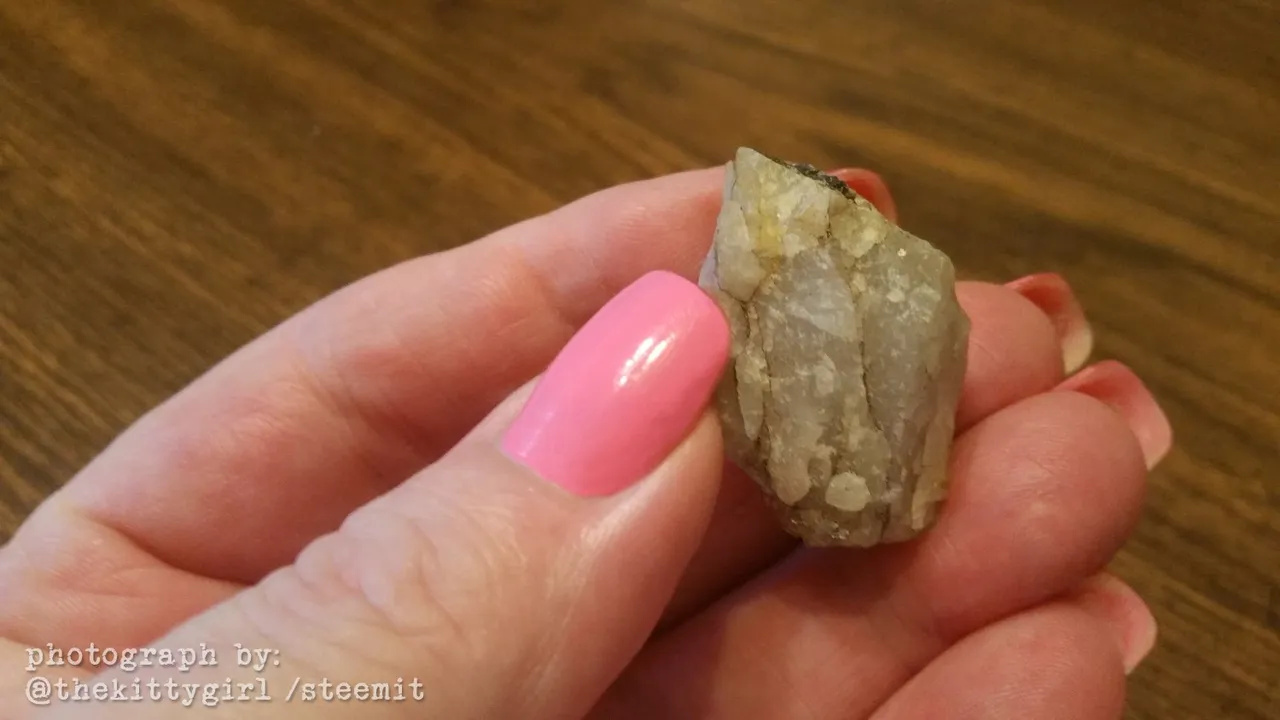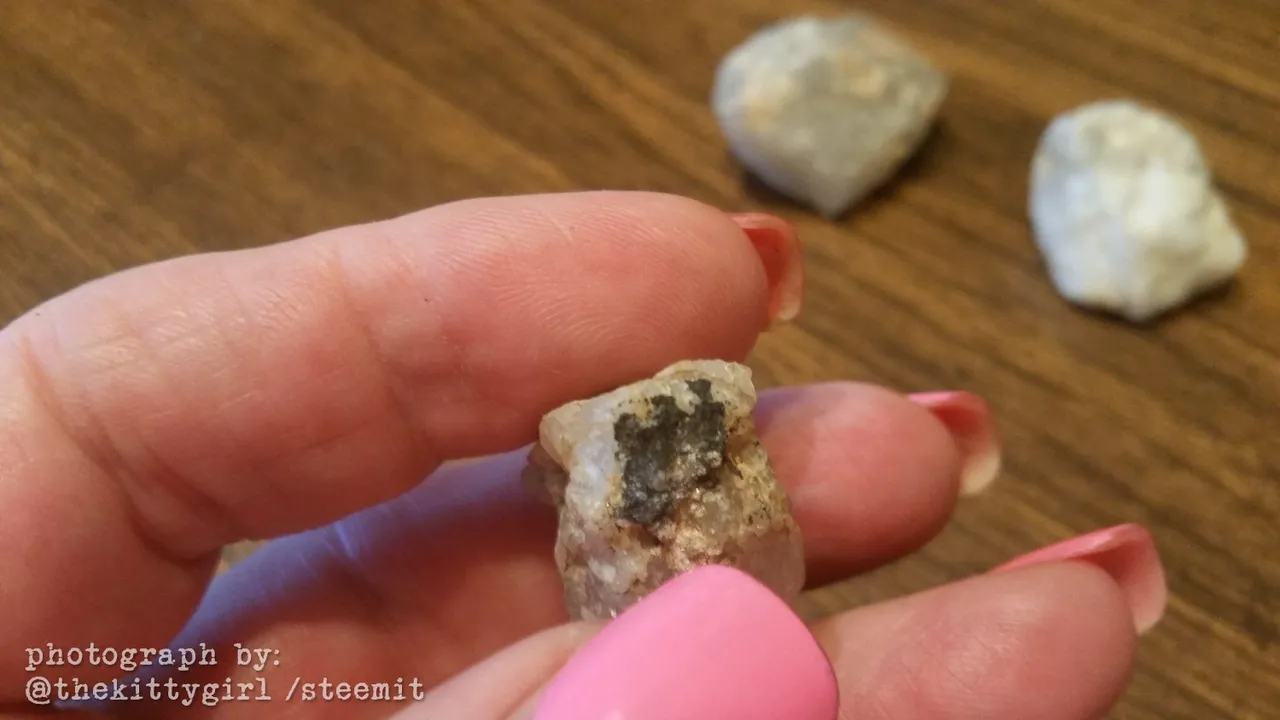I found a raw quartz crystal in the back yard sometime ago. It was quite dirty, but I cleaned it over the course of few days — first scrubbing it with a toothbrush and hot, soapy water, then soaking it in bleach, then scrubbing it again. This is the end result:
Here is [what I consider] to be the "back" of the crystal, which looks really nice after the intense cleaning:
There is some black material embedded in one side of the crystal. I am not sure what it is, but it could be biotite, amphibole, anatase, goethite, or any number of other possibilities.
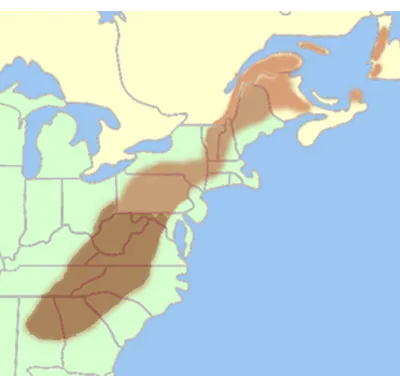 ~photo from Wikipedia~
~photo from Wikipedia~Most of my life, I have lived in the Appalachian region of the US — the Appalachian Mountains as well as the area surrounding them. The Appalachian Mountains are some of the oldest mountains on the face of the earth and pass through a large swath of the US and Canada, as shown by the image on the right. The brown area shows the extent of the mountain range, while the darker-brown area on the southern-end of that range is the region that is commonly called "Appalachia."
These mountains, at least those in the southern "Appalachia" section, are comprised largely of granite rock, which is composed of feldspar, quartz, and smaller amounts of other things such as mica and various minerals from the amphibole group. That is why I can walk into the back yard almost any day and find as much quartz rock as I want. Most of it, however, are irregular pieces, not "crystals" as seen above. Here is the quartz crystal again, with two irregular pieces of quartz also found in the back yard:
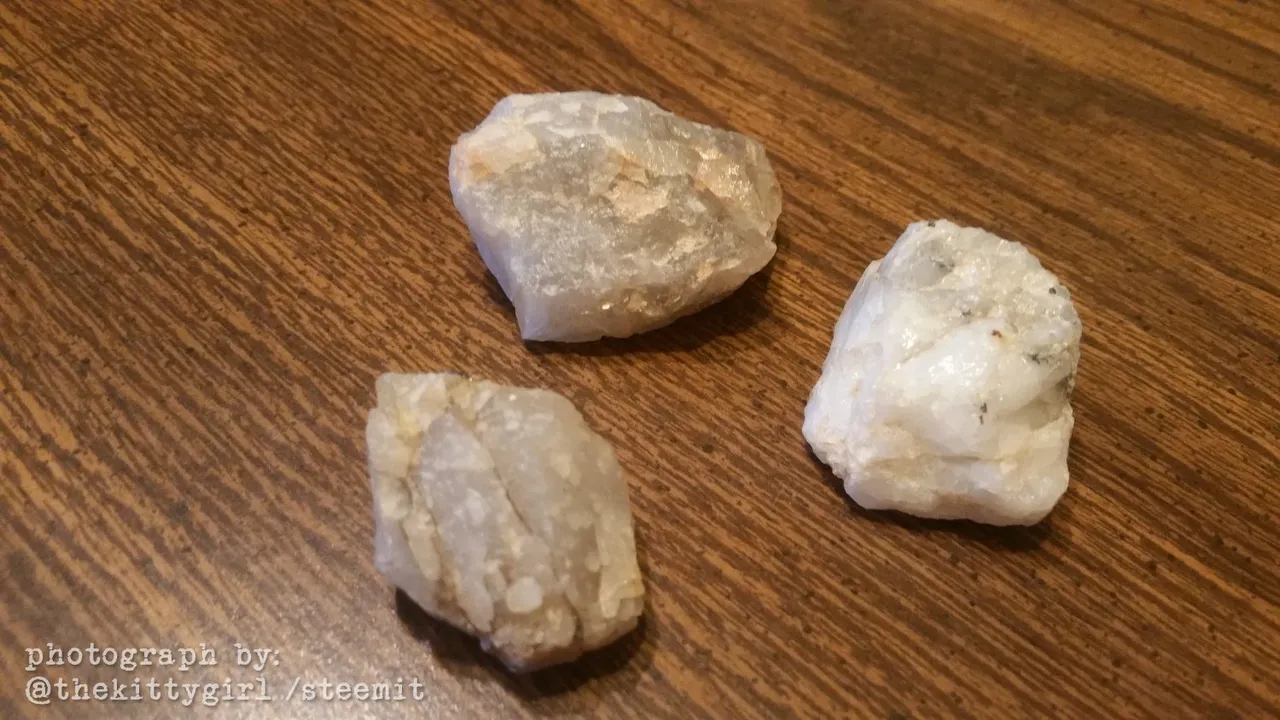
~photo by me~
And here is a closer view of the white rock on the right in the above photo. There are bits of a black inclusion in it, too, as well as an almost-heart-shaped reddish spot (not sure if that is clay or something else):

~photos by me~
When rocks wash-up from underground or are chipped out of mines, they are usually irregularly-shaped and rough in texture. Sometimes, it is desirable to keep the rock in its raw condition, but smoothing the outside of the rock is often the chosen option, usually for aesthetic purposes. For most rocks, this is achieved through "tumbling" the rock with other rocks.
Special "rock tumbler" machines are made for this purpose. Rocks can be placed into a special container, which is then rotated by an electric motor. Emery polishing powder is sometimes added to facilitate the process. The rocks rub against each other under the action of the tumbler, causing the rough and pointy spots to be worn-down to a smooth, glassy finish. This action takes weeks to achieve, but many stones can be processed at one time. The results are lovely, smooth stones that are wonderful to hold.
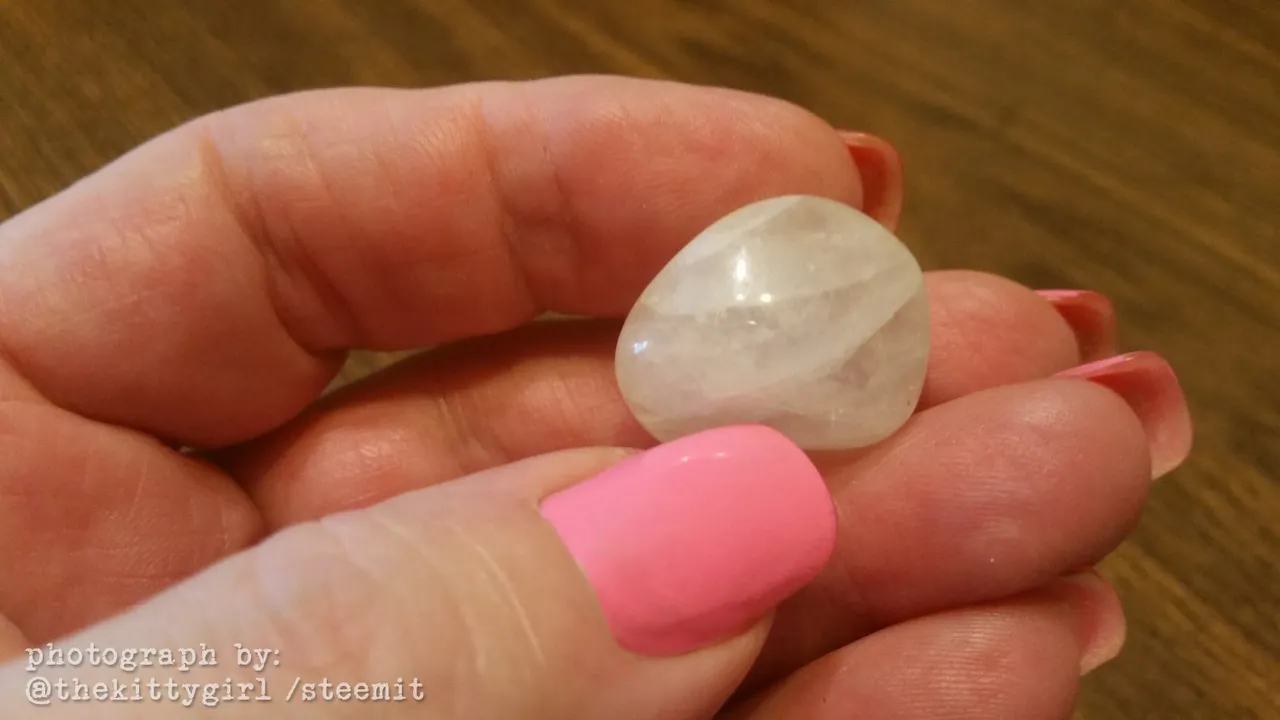
~photo by me, a quartz rock that has been tumbled to a smooth finish~
In the quartz rock pictured above, a couple of flat, planar surfaces can be seen inside the stone. Those may not have been visible unless the stone had been tumbled smooth!
Also, a tumbled stone can allow more light to pass through it (if, of course, it is not opaque), and that can open a whole other world of wonder. For example, the tumbled stone pictured below is reflecting light back to the eye from a surface INSIDE the stone, causing pretty rainbow patches of color! Sadly, my camera & skills are not able to catch the colors as vividly as they appear to the unaided eye. If you look closely, though, you should see patches of aqua-blue, magenta, and golden-yellow.
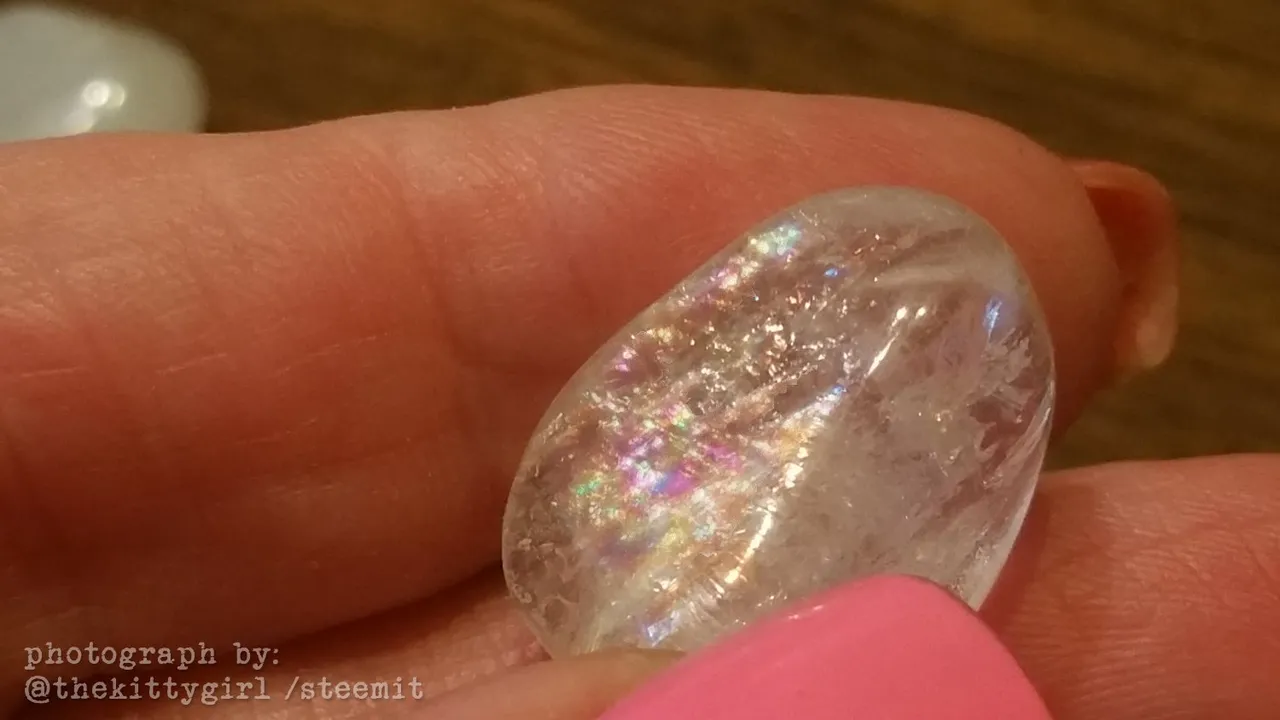
~photo by me~
I've collected several tumbled quartz stones over the years. In fact, one shop I once frequented had a standing deal where you could pick through tumbled stones dumped by the boxful into a table with short sides around it. For one set price (I think it was USD $3), you could buy a little cloth pouch with as many stones as would fit into the pouch, as long as one could still pull the drawstrings to close it!
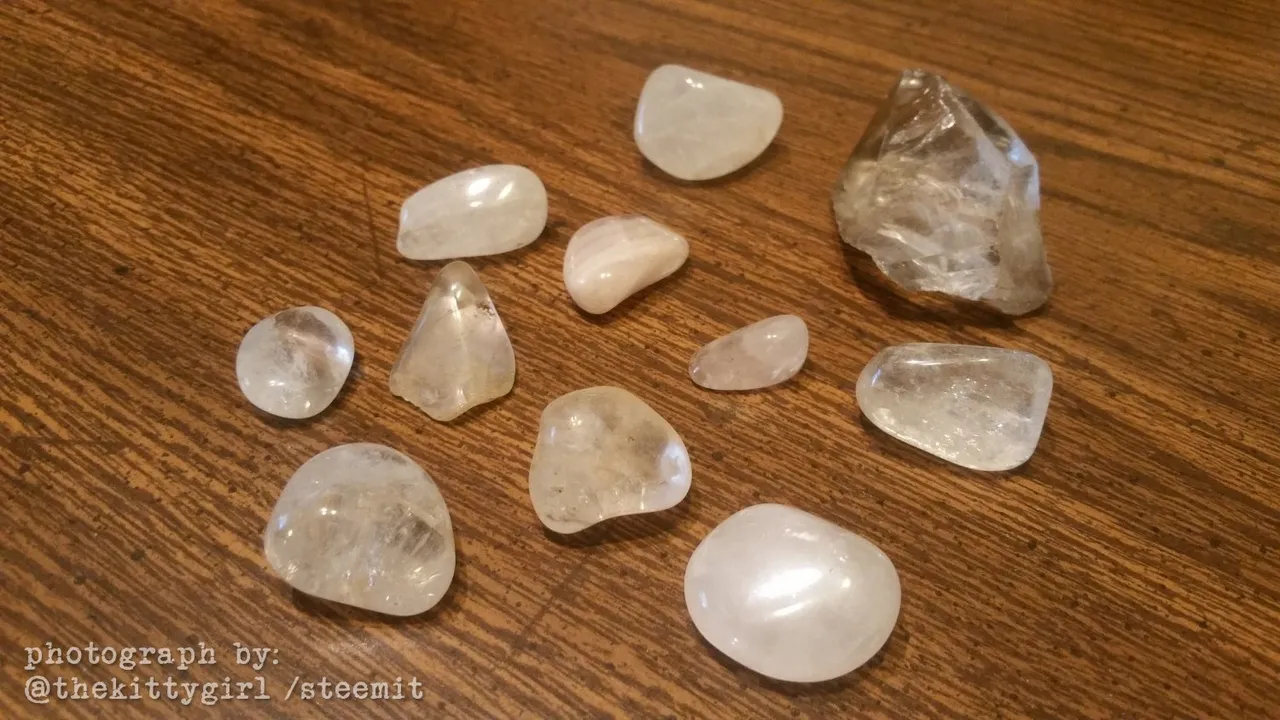
~photo by me~
Lastly, I shall show one more little piece of quartz that I find fascinating. The top portion is so milky opaque, one cannot see through it. However, the bottom portion of the same stone is clear and see-though! 😊
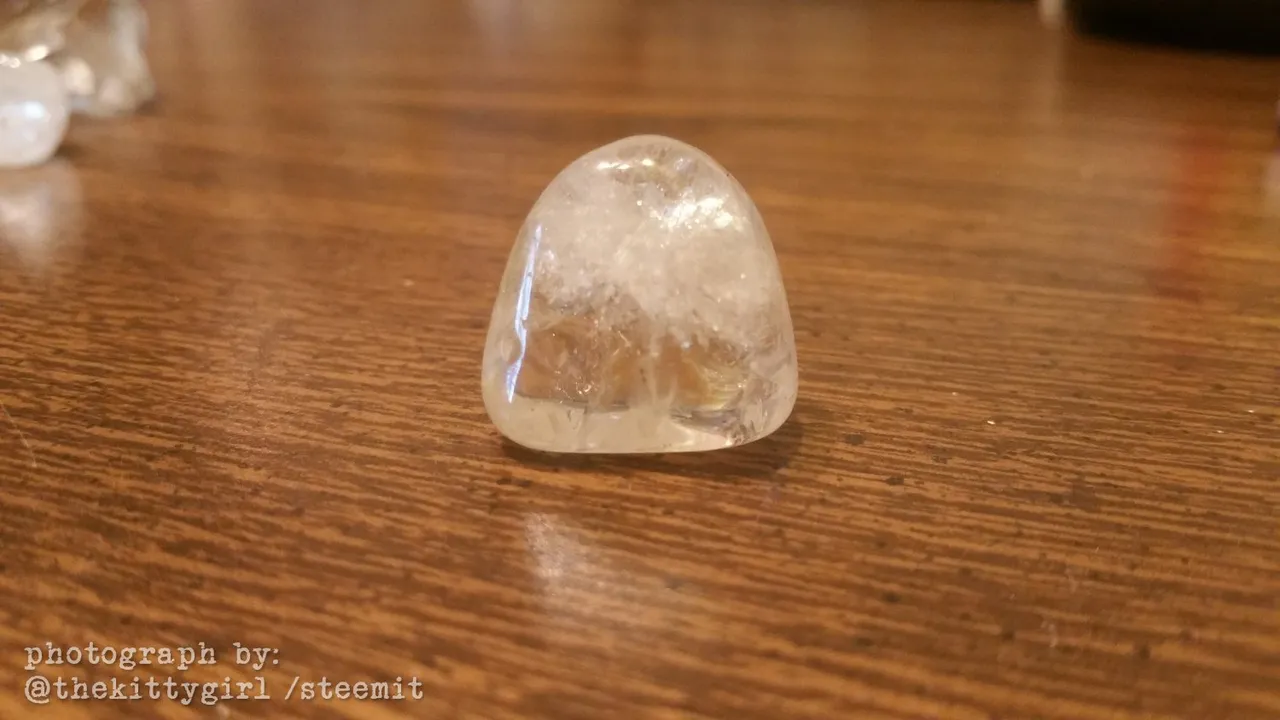
~photo by me~
SOURCES & additional reading for those interested:
1 TheQuartzPage.de
2 Wikipedia: Appalachian Mountains
2 Wikipedia: Quartz

